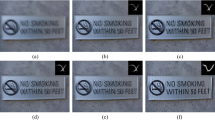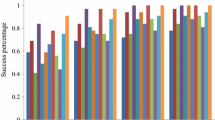Abstract
As an ill-posed problem, multiframe blind super resolution imaging recovers a high resolution image from a group of low resolution images with some degradations when the information of blur kernel is limited. Note that the quality of the recovered image is influenced more by the accuracy of blur estimation than an advanced regularization. We study the traditional model of the multiframe super resolution and modify it for blind deblurring. Based on the analysis, we proposed two algorithms. The first one is based on the total variation blind deconvolution algorithm and formulated as a functional for optimization with the regularization of blur. Based on the alternating minimization and the gradient descent algorithm, the high resolution image and the unknown blur kernel are estimated iteratively. By using the median shift and add operator, the second algorithm is more robust to the outlier influence. The MSAA initialization simplifies the interpolation process to reconstruct the blurred high resolution image for blind deblurring and improves the accuracy of blind super resolution imaging. The experimental results demonstrate the superiority and accuracy of our novel algorithms.
Similar content being viewed by others
References
Wirawan P D, Maitre H. Multi-channel high resolution blind image restoration[C]. In: Proceedings of IEEE International Conference on Acoustics, Speech, and Signal Processing. Phoenix, USA, 1999.
Freeman W T, Pasztor E C. Learning to estimate scenes from images[C]. In: Advances in Neural Information Processing Systems. 1998.
Sroubek F, Cristóbal G, Flusser J. Simultaneous superresolution and blind deconvolution[J]. Journal of Physics: Conference Series, 2008, 124(1): 012048.
Mudenagudi U, Singla R, Kalra P et al. Super resolution using graph-cut[C]. In: Proceedings of 7th Asian Conference on Computer Vision. Hyderabad, India, 2006.
Peleg T, Elad M. A statistical prediction model based on sparse representations for single image superresolution[J]. IEEE Transactions on Image Processing, 2014, 23(6): 2569–2582.
Fattal R. Image upsampling via imposed edge statistics[J]. In: ACM Transactions on Graphics(TOG), 2007, 26(3): 95.
Efrat N, Glasner D, Apartsin A et al. Accurate blur models vs. image priors in single image super-resolution[C]. In: Proceedings of IEEE International Conference on Computer Vision(ICCV). Sydney, Australia, 2013.
Wang Q, Tang X, Shum H. Patch based blind image super resolution[C]. In: Proceedings of 10th IEEE International Conference on Computer Vision(ICCV). Beijing, China, 2005.
Harmeling S, Sra S, Hirsch M et al. Multiframe blind deconvolution, super-resolution, and saturation correction via incremental EM[C]. In: Proceedings of 17th IEEE International Conference on Image Processing(ICIP). Hong Kong, China, 2010.
Levin A, Weiss Y, Durand F et al. Understanding blind deconvolution algorithms[J]. IEEE Transactions on Pattern Analysis and Machine Intelligence, 2011, 33(12): 2354–2367.
Perrone D, Favaro P. Total variation blind deconvolution: The devil is in the details[C]. In: Proceedings of IEEE Conference on Computer Vision and Pattern Recognition(CVPR). Columbus, USA, 2014.
Michaeli T, Irani M. Nonparametric blind super-resolution [C]. In: Proceedings of IEEE International Conference on Computer Vision(ICCV). Sydney, Australia, 2013.
Farsiu S, Robinson M D, Elad M et al. Fast and robust multiframe super resolution [J]. IEEE Transactions on Image Processing, 2004, 13(10): 1327–1344.
Sroubek F, Milanfar P. Robust multichannel blind deconvolution via fast alternating minimization[J]. IEEE Transactions on Image Processing, 2012, 21(4): 1687–1700.
Shan Q, Jia J, Agarwala A. High-quality motion deblurring from a single image[J]. ACM Transactions on Graphics(TOG), 2008, 27(3): 73.
Xu L, Jia J. Two-phase kernel estimation for robust motion deblurring[C]. In: Proceedings of Computer Vision-ECCV 2010. Heraklion, Greece, 2010.
Windows Image Acquisition[EB/OL]. https://en.wikipedia.org/wiki/Windows_Image_Acquisition, 2016-07-05.
Lertrattanapanich S, Bose N K. High resolution image formation from low resolution frames using Delaunay triangulation[J]. IEEE Transactions on Image Processing, 2002, 11(12): 1427–1441.
Rudin L I, Osher S, Fatemi E. Nonlinear total variation based noise removal algorithms[J]. Physica D: Nonlinear Phenomena, 1992, 60(1-4): 259–268.
Rameshan R M, Chaudhuri S, Velmurugan R. Joint MAP estimation for blind deconvolution: When does it work? [C]. In: Proceedings of the 8th Indian Conference on Computer Vision, Graphics and Image Processing. Mumbai, India, 2012.
Thompson A M, Brown J C, Kay J W et al. A study of methods of choosing the smoothing parameter in image restoration by regularization[J]. IEEE Transactions on Pattern Analysis & Machine Intelligence, 1991, 13(4): 326–339.
Eldar Y C. Generalized SURE for exponential families: Applications to regularization[J]. IEEE Transactions on Signal Processing, 2009, 57(2): 471–481.
Ramani S, Liu Z, Rosen J et al. Regularization parameter selection for nonlinear iterative image restoration and MRI reconstruction using GCV and SURE-based methods[J]. IEEE Transactions on Image Processing, 2012, 21(8): 3659–3672.
Hirsch M, Harmeling S, Sra S et al. Online multiframe blind deconvolution with super-resolution and saturation correction[J]. Astronomy & Astrophysics, 2011, 531: A9.
Harmeling S, Hirsch M, Sra S et al. Online blind deconvolution for astronomical imaging[C]. In: Proceedings of IEEE International Conference on Computational Photography(ICCP). San Francisco, USA, 2009.
Goldstein A, Fattal R. Blur-kernel estimation from spectral irregularities[C]. In: Proceedings of Computer Vision-ECCV 2012. Florence, Italy, 2012.
Author information
Authors and Affiliations
Corresponding author
Additional information
Supported by the National Natural Science Foundation of China(No. 61340034), the Research Program of Application Foundation and Advanced Technology of Tianjin(No.13JCYBJC15600).
Rights and permissions
About this article
Cite this article
Yuan, W., Zhang, L. Multiframe blind super resolution imaging based on blind deconvolution. Trans. Tianjin Univ. 22, 358–366 (2016). https://doi.org/10.1007/s12209-016-2838-0
Accepted:
Published:
Issue Date:
DOI: https://doi.org/10.1007/s12209-016-2838-0




